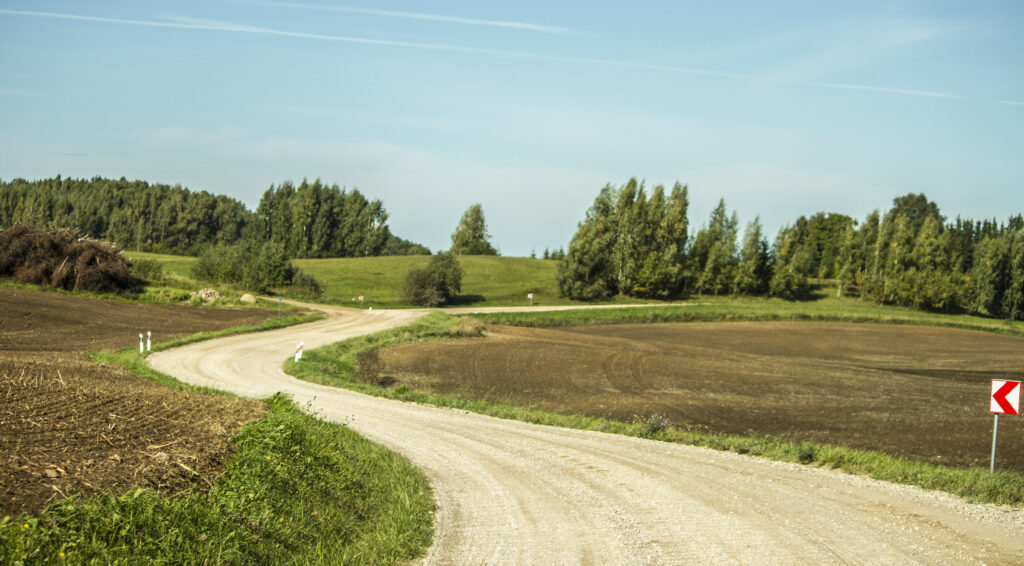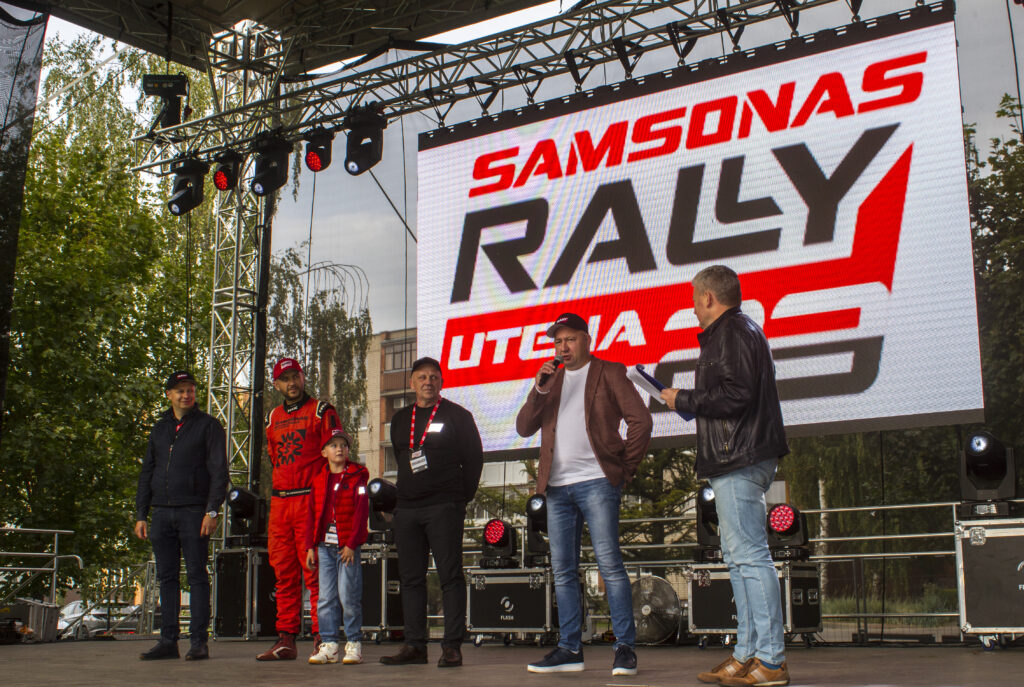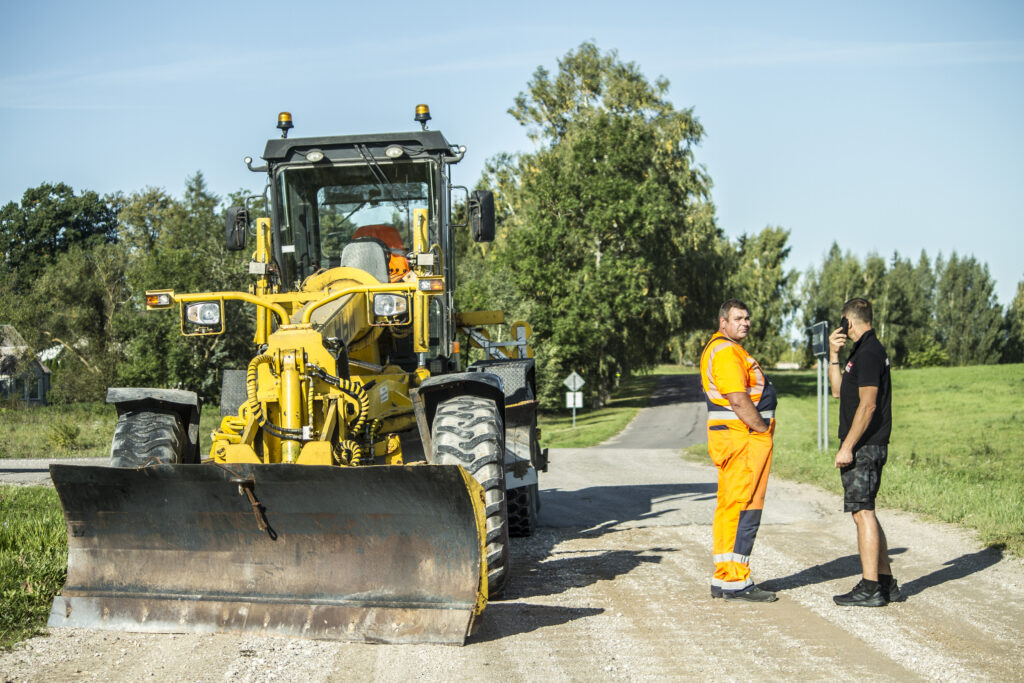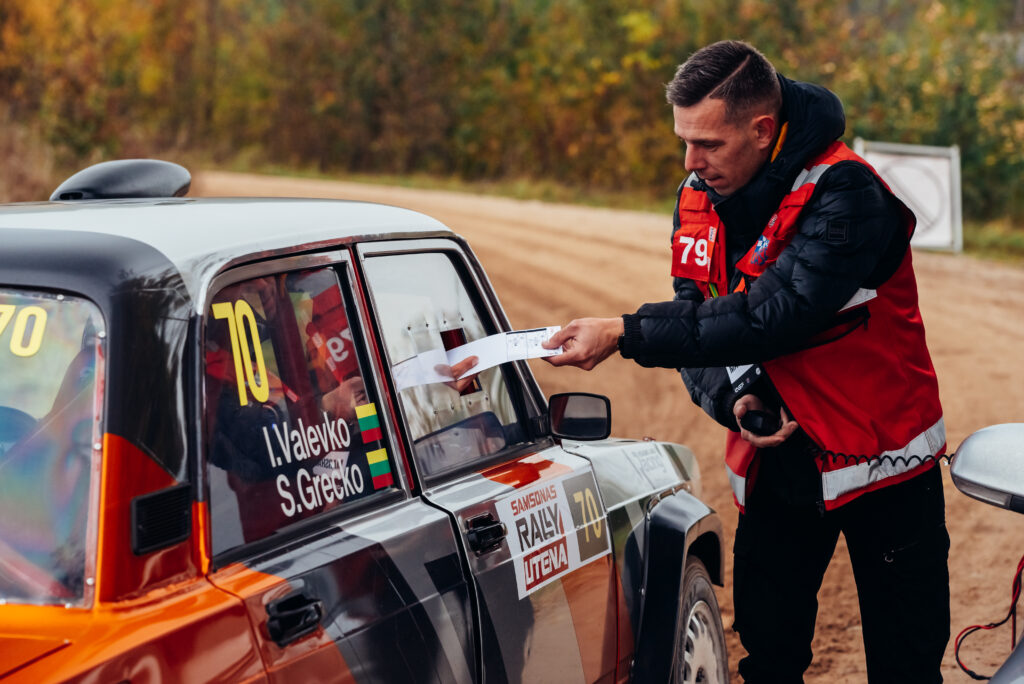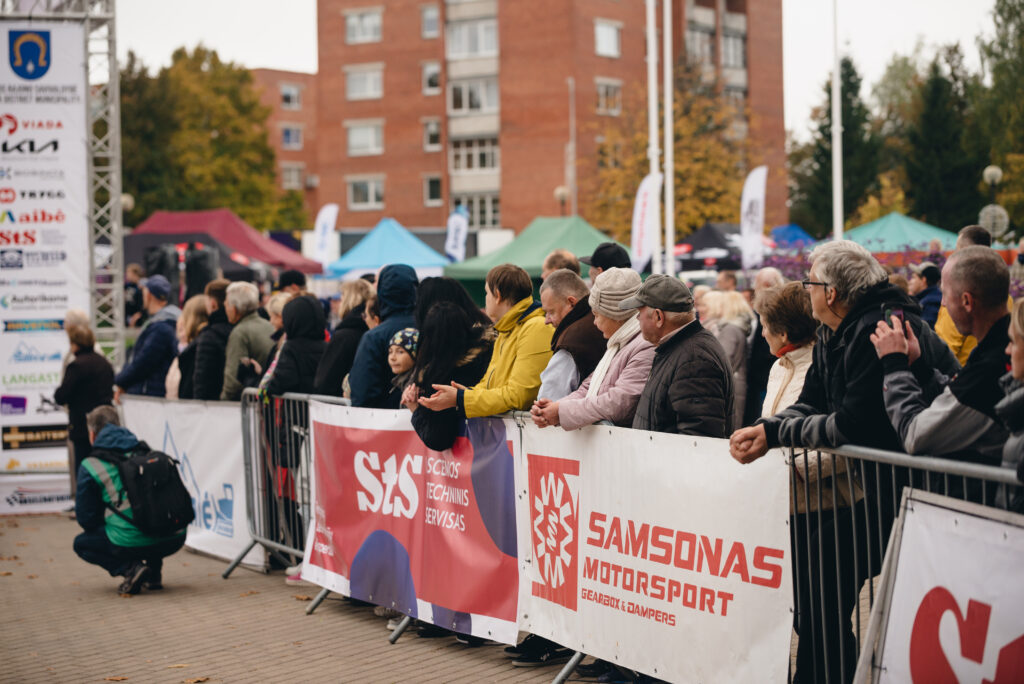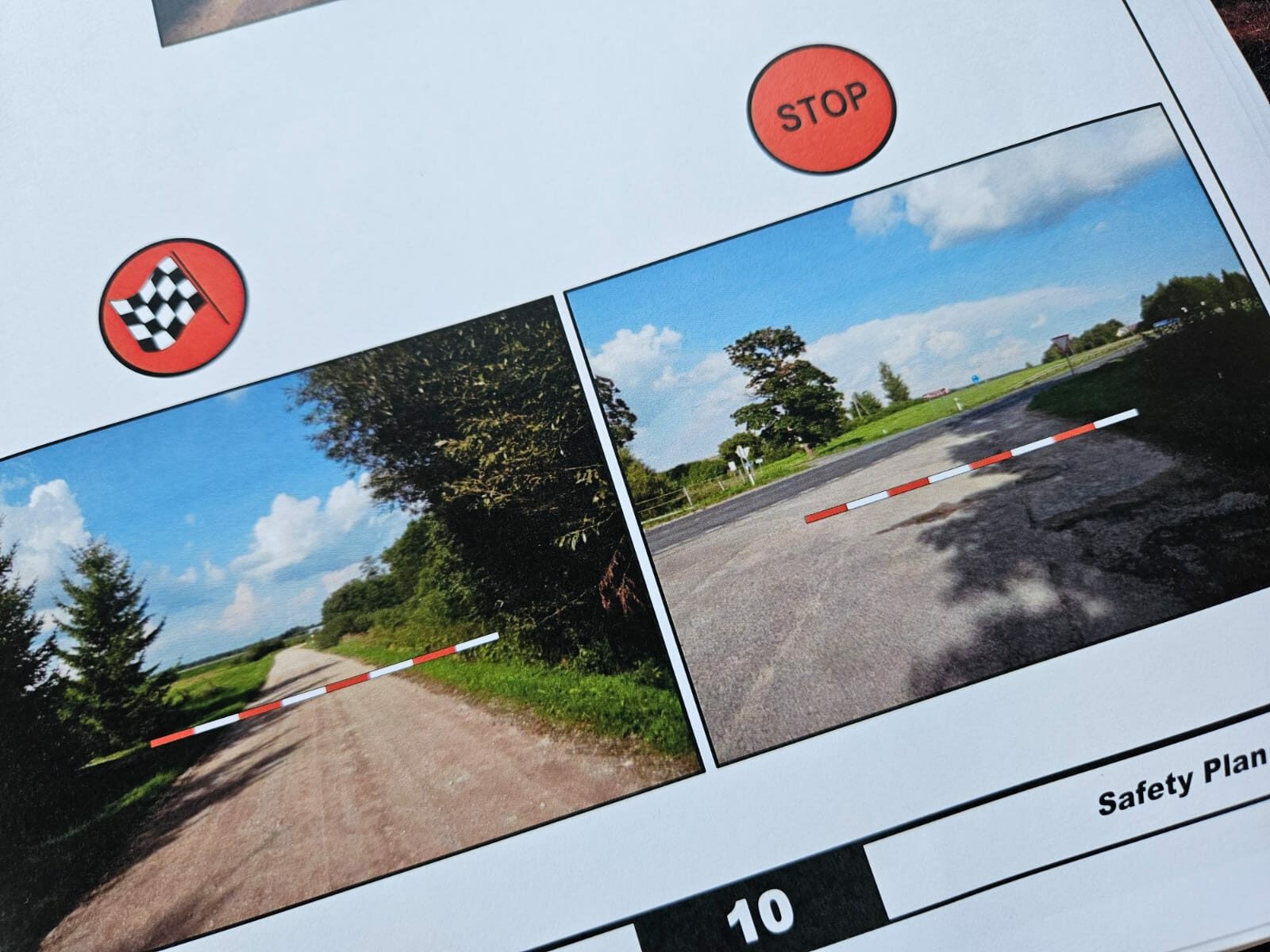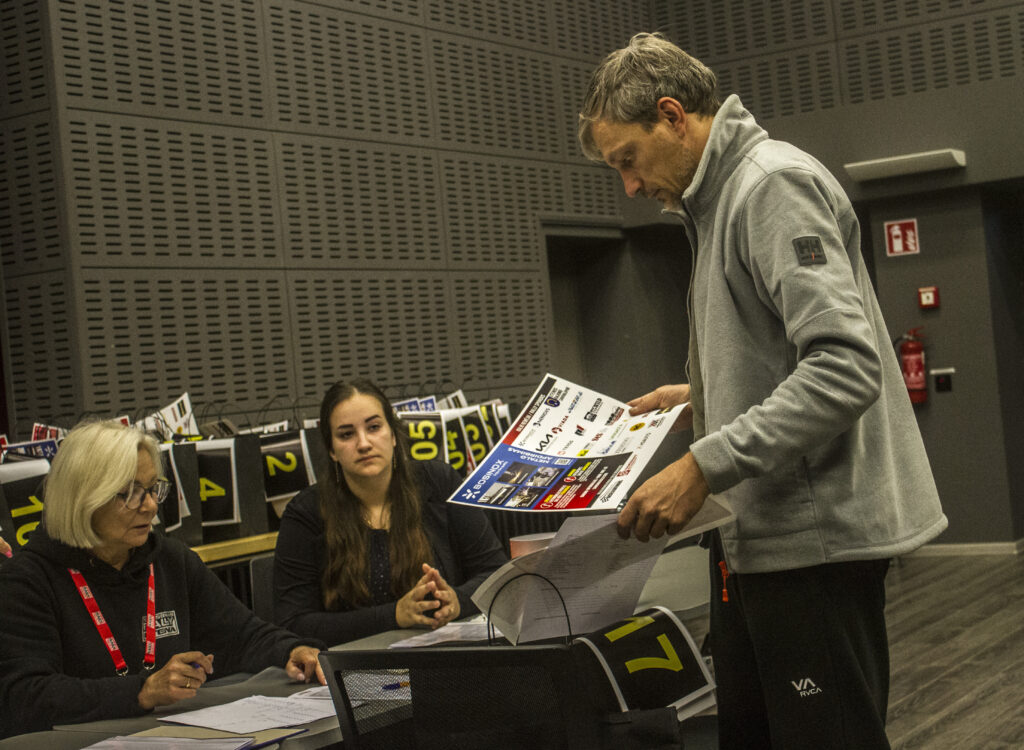Arvydas Petkevičius, the organizer of the “Samsonas Rally Utena 2024” competition, which will take place on 27 and 28 September, shares his experiences and explains how the rally is organized.
The start – Selection of roads for special stages
The organization of the rally begins with the selection of special stages. It is very important that the stages have a suitable surface, especially if the rally is organized in autumn. This is why certain sections are sometimes only driven once, because the roads would not withstand more runs. However, this is not the only reason some sections are only driven once – another important moment is the transfer of security personnel, ambulances, firefighters and other personnel to other locations. The logistics of rally personnel between stages is like a complex spider’s web, and it’s a big job to put it together properly.
Documents, municipalities and other intricacies
Later, a safety plan and an itinerary are drawn up. The latter shows when and where the stages, refueling, service, and regrouping zones are. Regrouping of participants takes place so that there are no time gaps due to participants who have withdrawn from the rally.
Once the rally plan has been drawn up, a lot of work has to be done to find all the necessary personnel for the rally, such as security staff, marshalls and special services. We work very intensively with the elders and the communities of the places where the special stages will take place, as they own the roads and know the residents that live along the roads, and we look for partners and sponsors. All these processes take at least half a year and do not end even after the rally. There is indeed a lot of work in the areas of rally household works, press, communication, and public relations. The work increases in particular when new special stages are used.
The weather before and after the rally plays a very important role. One of the most important tasks, without which the future of the rally is in jeopardy, is the quick and high-quality repair of the roads after the competition. It is obligatory to write letters of guarantee to the municipalities and other institutions in which we undertake to repair the roads.
Cooperation with the elderly
The elders are informed that on the day of the rally, there will be competition on the roads in their supervised area. They know these roads best and know the residents. Many of them are happy that the rally will take place, but of course not all residents like the fact that the rally will take place near their yards or fields. The biggest concern is the damaged road surface. This is especially relevant in the fall when the weather conditions are much worse, the roads do not dry as quickly as in the summer and are more easily damaged. The worst is the rain after the rally because it makes it most difficult to repair the roads. We always try to restore the roads within 5 working days, and after some time we check again with the elders how the roads are holding up after the repair and whether they still need to be repaired, i.e. regraded or resurfaced. This additional inspection is usually carried out two weeks after the rally.
Rally personnel
The team of rally organizers must be put together early enough because the work starts in advance. The rally organizer must appoint a rally director, a media representative and other officials. A clerk of the course and a safety officer are also appointed. The latter selects the SAF personnel, while the competition director selects the marshalls. In general, it is discussed which safety personnel who ensure the safety function (course cars) will be deployed at the event and how many of them are needed. The biggest challenge, as always, is the street stages, especially at night. There are a lot of residential buildings, which means that a lot of security personnel and fences are needed.
Rally household works
The rally household part of the rally requires a lot of personnel, e.g. for fencing off special stages, building all the infrastructure, fences, toilets, garbage containers, and preparing spectator zones. But these people are not tied to the rally – they do this in addition to their main work. All of this essentially takes place in the week before the rally, when everything has to be set up. One very interesting detail is the mowing of the roadsides. If the special stage is a bit too fast, we try not to touch the grass along the road because it acts like a natural barrier to slow down the speed of the racers a bit. We also take great care in preparing special stages by removing larger rocks from the road, marking dangerous spots with red paint or even putting up signs with exclamation marks in extremely dangerous spots. Some places are secured with awnings and fences so that gravel and stones do not affect the areas of residents or buildings. We protect the inner parts of some corners with special barriers to prevent drivers from cutting them and damaging them.
Safety plan
A safety plan is done consisting of at least a few people who have experience with it. Maps are printed with special stages on them. Places where “stop” stripes are needed are drawn on these maps, and dangerous spots and the locations of security personnel are noted. Normally, safety officers are posted every 500 meters, but this distance can vary due to the intricacies of the special stage. The safety plan calculates how many safety personnel are needed in each stage, how many meters of “stop” tape will be stretched, where and what signs will be posted, what evacuation routes are planned, and all contacts are indicated so that communication between marshalls runs smoothly. Similar but less information is also included in the road book for the participants. The safety plan is one of the most comprehensive documents and the most important document without which the competition cannot be held. Once completed, it is additionally checked by a security expert, and once everything has been finalized and approved, the documents are released to the press.
People who work during the rally
For several years we have been communicating with the same trusted people, i.e. the clerk of the course and his deputy, the chief security officer. I myself have made a considerable contribution to motorsport as a marshall, this year I even had to work in the “WRC Rally Latvia” competition, which allowed me to improve my skills even further. Nevertheless, we will try to implement a small part of the World Rally Championship practice during the “Samsonas Rally Utena” rally. The organizer of the rally submits the documents to the administrative commission, and from that moment on, the organizer has no influence on any decisions. All the work is done by the rally officials at the headquarters and the marshalls in the special stages. As the organizer, I am not often in the rally HQ during the rally, because I am always driving around the special stgaes and checking that everything is set up and prepared properly. There is also an organization car at our rally that drives in front of the SAF cars on the route and is crewed by people from the rally organizing committee. We encourage the spectators to behave safely on the special stages, we see and report on the radio where the security forces may need to be reinforced. Because we have a map with us, have covered thousands of kilometers on the stages and can foresee the most dangerous spots, we can pass this information on to those responsible for track safety so that more attention is paid to these spots. Particular attention is paid to places near bodies of water – a diver is always on duty there. The rally wristbands that you put on after purchasing a rally pass also serve more than just a monetary purpose, namely to identify people, because anyone who wants to be on the special stages must have this wristband and be familiar with the basic safety aspects.
We also invite you to pre-order the rally passes for the “Samsonas Rally Utena 2024” on the Bilietai.lt platform. The ticket price is 15 euros. The event is free for children under 12 years old.
